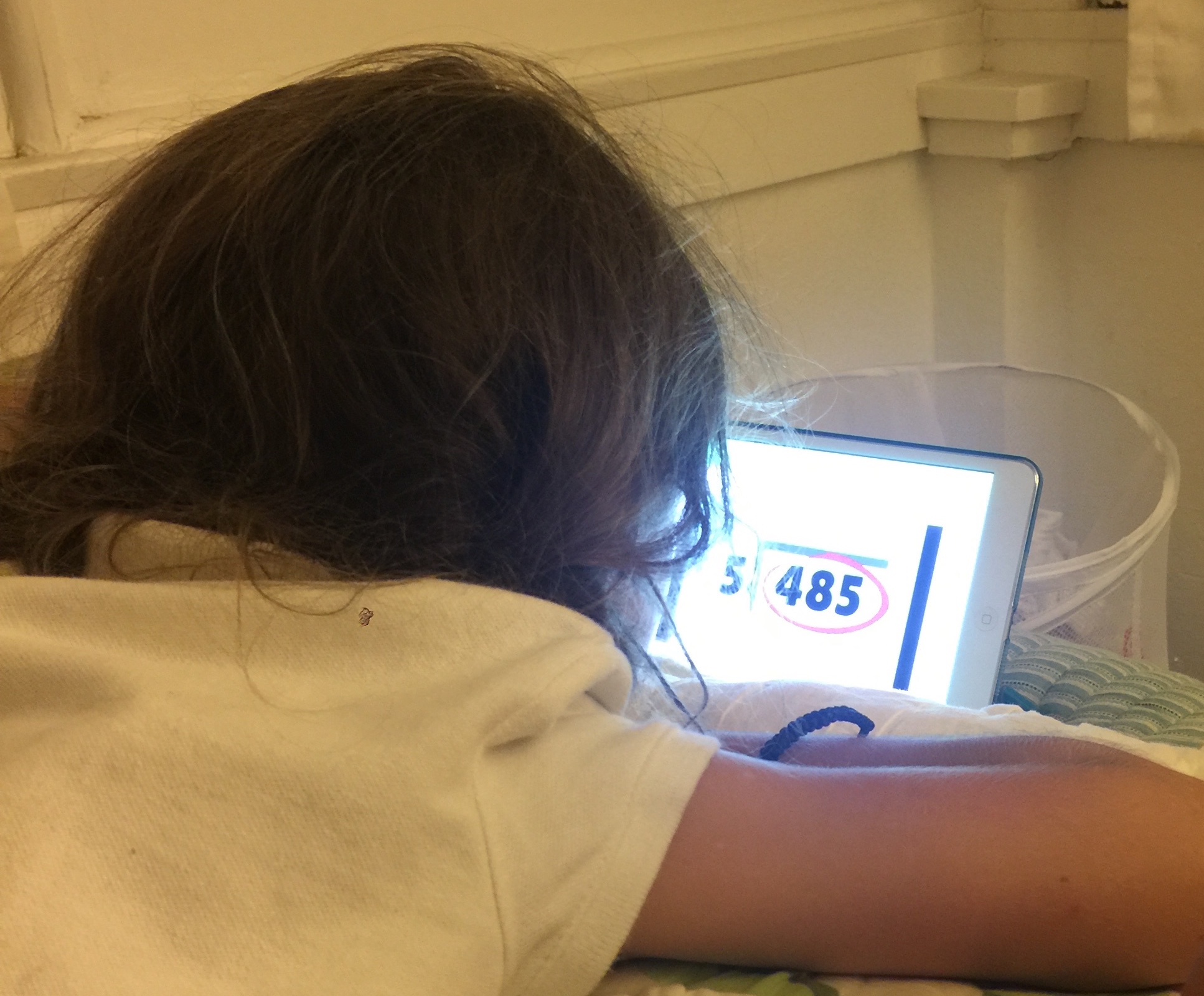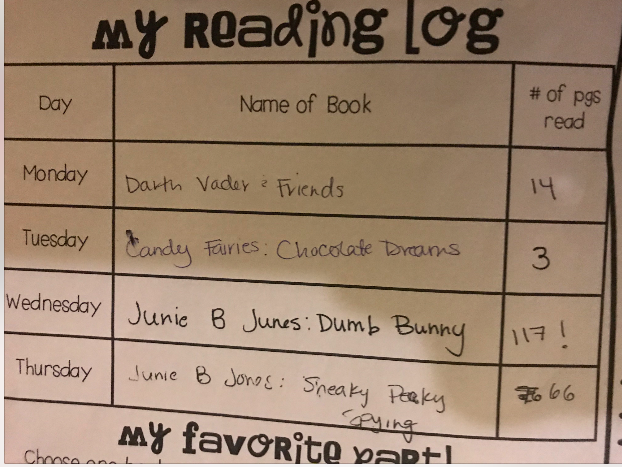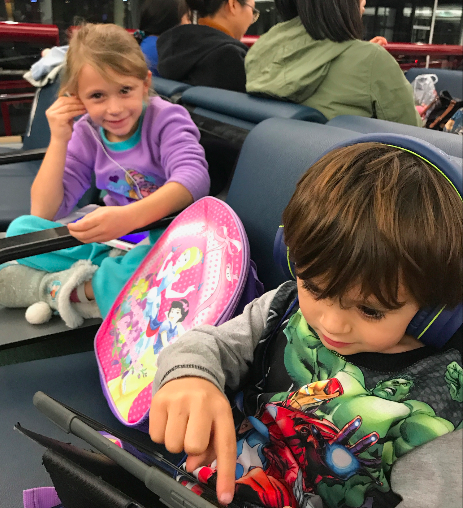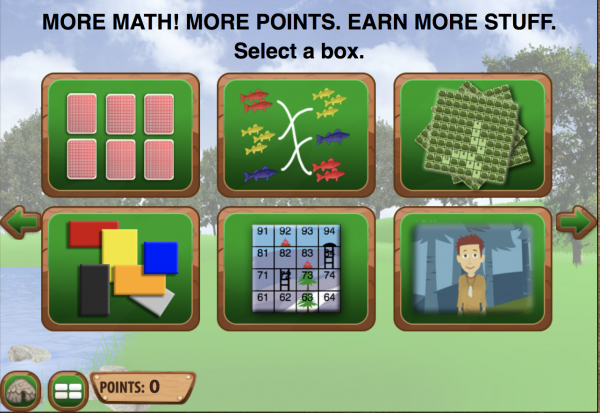How I Got What I Wanted By Giving My Kids What They Wanted
Here’s how I got my kids to read books: I gave in and gave them their iPads.

Literally, everything changed overnight. My daughter went from grudgingly reading 3 pages on Tuesday night to reading over 117 pages on Wednesday and 66 pages on Thursday. And I’m not talking about Kindle books or ebooks, I mean actual hold-in-your-hands books. (Also, just to be clear: she already had the ability to read that many pages, so it’s not a magic “she learned to read” overnight, we’re talking motivation.)
What is this witchcraft of which I speak, you’re asking? Well, let me back up.
When I was little, I loved to read.
Fiction. Nonfiction. Picture books. Novels. Good books (The Borrowers, Harriet the Spy, pretty much anything by Roald Dahl). Not so good books (like 9 million “The Babysitters Club” or “Sweet Valley High” series books). Books that stayed with me decades later (One Hundred Years of Solitude – greatest book ever written). Books that I could not get through and gave up on (Secret Garden, Don Quixote). Books that I have long forgotten having ever read.
I spent hours, days, possibly years of my life reading. I still love to read – and read actual, hold-in-my-hands, page-turning books.
When it comes to reading, my kids could take it or leave it.
As my kids have gotten older, I’d be lying if I didn’t say it made me slightly sad that they didn’t have the obsessive passion for reading. That’s not to say they don’t read. They think reading is fine. It’s just not the No. 1 thing they want to do.
Now, my 10-year-old has that obsessive passion for all things math, which certainly is fine by me as well. And I’m not saying that just because I have a math video game company that makes awesome games but because in the 21st century, someone with outstanding math skills is going to find herself with a wide number of future options. But reading and math are not mutually exclusive.
My 6-year-old is 6 – and I am not one of those people who believes that her ability to get in to a good university is going to be at all contingent on her academic performance in first grade, but I’d still like her to spend time reading
As for my 3-year-old, obviously, we’re still at the stage of him being read to vs. reading himself (slacker!). My challenge there is not his interest in being read to, but his truly limited range of interest in literature. As in, if I have to read “Elmo’s Search-and-Find” one more time, which I can recite by memory – my brain might just shut off. (But that’s for another day).
Embarking on another school year, I struggled to figure out how to get my girls to appreciate reading. How to get them excited about. They did a negligible amount of reading over the summer, but I gave them a pass because they were at least immersed in another country/language and I didn’t have the time to feel guilty about it. But the time had come to buckle down and bust out the books.
Now, my children – like many children – love watching shows. They could do it for far more hours than I would like. For the past two years, we tried to implement an iPad ban on school nights, but it is admittedly brutal.
In part, because not letting them watch shows, means that they need to find something else to do – which as far as they are concerned translates into telling me repeatedly how bored they are; trying to sneak away and watch iPad because they conveniently “forgot” they weren’t supposed to be watching it; and/or fighting with their siblings.
Then there’s the inevitable fact that – as much as I try to take a break from work between when they get home and when they go to bed – something 7 Generation Games/Strong Mind Studios-related occasionally comes up, and I need 10 or 30 minutes to deal with whatever that is. Leaving me two options as I try replying to X email or seeing if I can replicate Y error: 1. Having to do it while my children complain about being bored and/or say to me, “Why are you on a device when you say no devices?; or 2. Giving in and giving them the iPads, while I do whatever need to be done, then having it be a battle to pry them away afterwards.

Which brings us to our first full week back at school. For some reason that I can’t even recall, my 1st grader, who is supposed to be logging her nightly reading, didn’t read a single page on Monday. Since I was not going to blatantly lie on her reading log, I made her read a picture book for 15 minutes before we left for school Tuesday morning and jotted that down for Monday night. Tuesday was back-to-school night, meaning we got home late, but that doesn’t mean that homework didn’t have to be done. Determined that we were going to do better than Monday (it was a low bar to clear), I had her read that night before bed – but it was like bathing a cat.
By Wednesday – less than 5 days into our 190+ day school year – it became clear that something had to change. That same day I read, or at the very least saw, for the umpteenth time one of those articles saying how Bill Gates and Steve Jobs never let their kids have devices. “Great for them,” I remember sarcastically thinking. But then, I seriously thought, what if instead of acting like technology is the enemy (because I don’t think it is ), we accepted it and use it to encourage learning?
“I’ll make you a deal,” I told my girls. “Read for 20 minutes, and then you can watch one show. In fact, you can watch shows for as many minutes as you read for.”
Suddenly, instead of whining about reading, they pulled out their books and settled into chairs. Before we knew it, 20 minutes had passed.
“So if I read for more, I get two shows?” my first grader asked.
“Yes,” I said. “In fact, if you read for an hour, you can watch shows for the rest of the night.”
“Really?!” they asked, shocked by this turn of events.
“Yep,” I said. I did the math in my head – they get home around 6:30. By the time they start reading, it’s 7. If they read for an hour, it’s 8. They start getting ready for bed by 9:30 at the latest, meaning that’s maybe 1.5 hours of iPad at most. While not ideal, it’s probably not going to turn their brains to mush.
“I’ll take that deal,” my oldest said.
“Me too,” her sister echoed.
And for the next hour – aside for the occasional “how much more time?” – there was silence. No complaining. No whining. Just reading.
The timer went off.
My sixth grader went off to watch some WWE. My first grader – who I have struggled to motivate – had 2 pages left to finish her book.
“I really want to finish my book so I can get another one tomorrow,” she said.
“You can do that,” I pointed out.
So she did. She read 117-pages of Junie B. Jones in one evening.
Thursday night, they came in the door and pulled out their books.
“Same deal, right? Read for an hour, unlimited shows,” my sixth grader confirmed.

Deal still stood.
She set the timer. Only this time, no one asked me how much time was left. They just read. Then the beep sounded – and they kept reading!
“I just want to finish this chapter,” my sixth grader said. (She’s reading a mother-censored version of “My Fight/Your Fight.”)
“Me too, I have 10 pages left, and then I am done,” my first grader said. This is a girl, who has never willingly read a chapter book cover-to-cover, finishing her second one in a night.
I remember early on when we founded 7 Generation Games, someone asked, “Well, yeah, but are the kids just learning the math part in your products so they can get to the game part? Or are they learning it because they want to be learning it?”

Our answer was, “If they’re learning it, does it really matter why? If they come out of it at the end knowing how to multiply, that’s the important part.”
Would I like my daughters to have a deep love to reading? Of course – and they very well may get to that point. That said, if faced with having them willingly read – even if it’s a means to an end- and having them not read, I’d go with Option 1 every time.
When you look at it in the bigger picture, it makes sense. We want our children to have an innate love of learning – and in the perfect world, they would. But let’s be honest, at the end of the day, whether they’re innately interested or not, they need to learn the material. They need to do math. They need to read.
Think about your daily life. it would be amazing if all of the things that we had to do were so enjoyable that we just wanted to do them without reward. But we – as adults, no matter how much we love our jobs – go to work and expect to be paid. We expect to somehow be compensated for our time and effort with something we appreciate (i.e. money). What if we approached learning with that idea, with an understanding that learning is “work” in mind?
Because learning is a lot of work. I know because we’ve observed literally thousands of kids in classrooms over the years. Providing kids with incentive to learn is what we have been doing at 7 Generation Games since we founded the company with our design centered around the idea of “solve a problem/master a concept, be rewarded with gameplay.”
I’m not saying that I’m going to start paying my kids for going to school, but if they’re willing to put in an exponential amount more effort so they can watch a couple of shows on Netflix, I’m more than happy to hand them their iPads.

